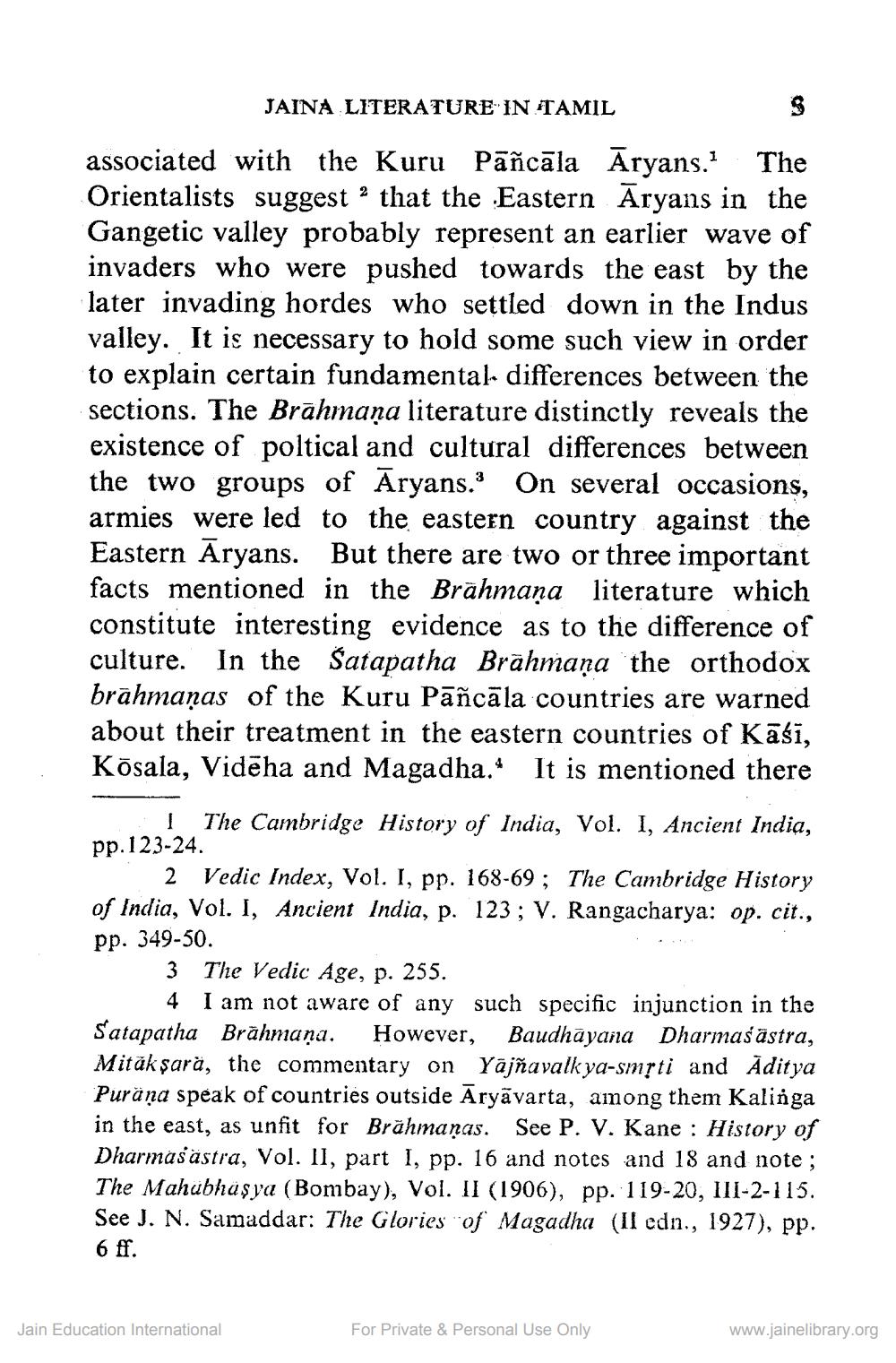________________
JAINA LITERATURE IN TAMIL
S
associated with the Kuru Pāñcāla Āryans. The Orientalists suggest ? that the Eastern Aryans in the Gangetic valley probably represent an earlier wave of invaders who were pushed towards the east by the later invading hordes who settled down in the Indus valley. It is necessary to hold some such view in order to explain certain fundamentale differences between the sections. The Brāhmaṇa literature distinctly reveals the existence of poltical and cultural differences between the two groups of Aryans. On several occasions, armies were led to the eastern country against the Eastern Aryans. But there are two or three important facts mentioned in the Brahmaņa literature which constitute interesting evidence as to the difference of culture. In the Satapatha Brahmaņa the orthodox brahmaņas of the Kuru Pāñcāla countries are warned about their treatment in the eastern countries of Kāśi, Kõsala, Vidēha and Magadha. It is mentioned there
I The Cambridge History of India, Vol. I, Ancient India, pp. 123-24.
2 Vedic Index, Vol. I, pp. 168-69 ; The Cambridge History of India, Vol. I, Ancient India, p. 123; V. Rangacharya: op. cit., pp. 349-50.
3 The Vedic Age, p. 255.
4 I am not aware of any such specific injunction in the Satapatha Brāhmaṇa. However, Baudhāyana Dharmasastra, Mitāk sarä, the commentary on Yajñavalk ya-smrti and Aditya Puräņa speak of countries outside Āryāvarta, among them Kalinga in the east, as unfit for Brāhmaṇas. See P. V. Kane : History of Dharmasastra, Vol. II, part I, pp. 16 and notes and 18 and note; The Mahubhasya (Bombay), Vol. II (1906), pp. 119-20, 111-2-115. See J. N. Samaddar: The Glories of Magadha (Il edn., 1927), pp. 6 ff.
Jain Education International
For Private & Personal Use Only
www.jainelibrary.org




